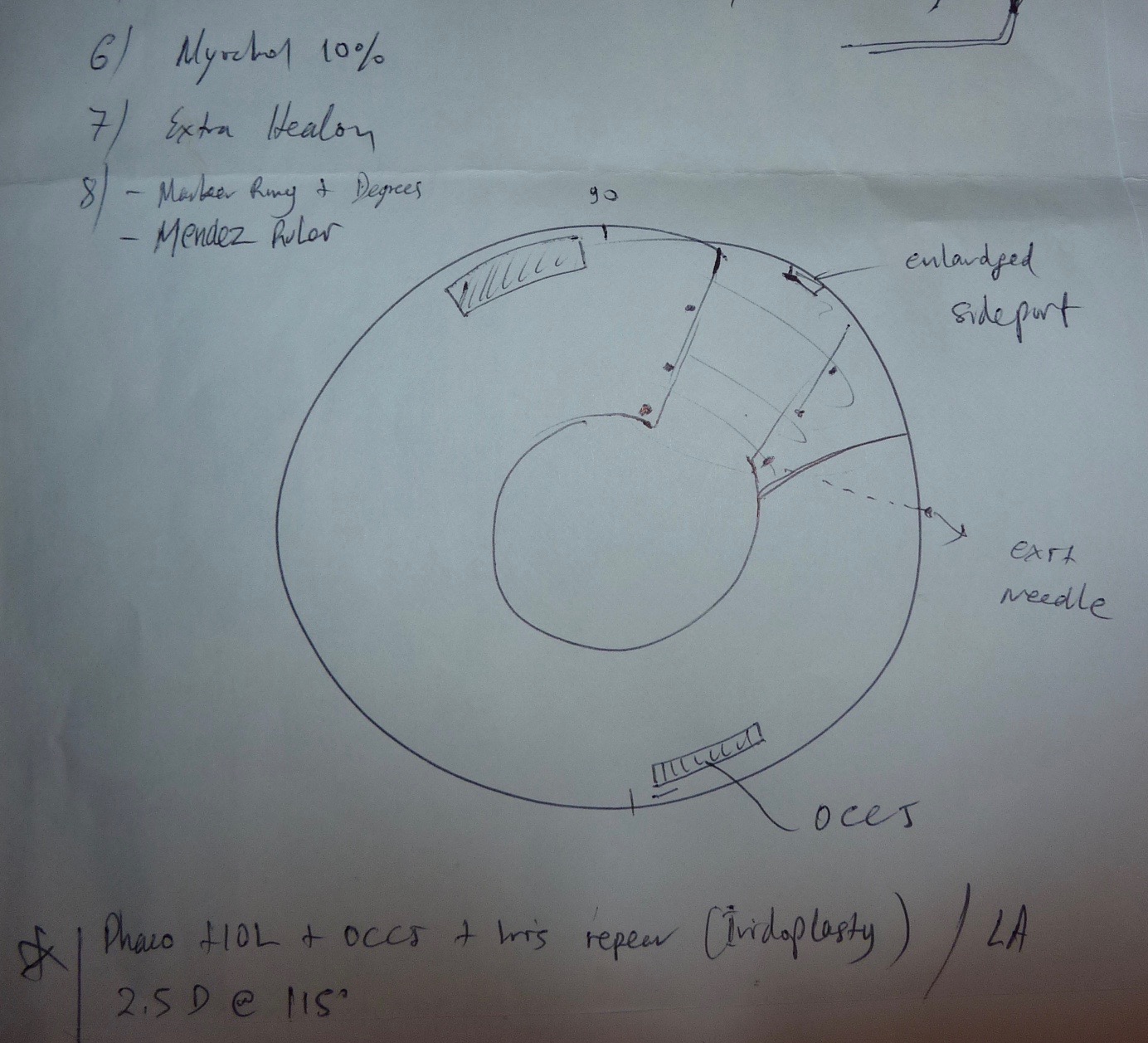Pupilloplasty (pew-pil-oh-plasti) n. a surgical procedure to alter the shape or function of the pupil. It is usually performed to repair a pupil damaged after trauma.
The pupil is the aperture through which light passes into the eye and is created by the circular ring of muscles known as the iris sphincter muscle. Pupilloplasties are designed to reconstruct the shape of the pupil, typically after traumatic damage, a congenital defect (coloboma) or other surgical procedures (complicated cataract). A damaged or non-functional pupil is unable to properly adjust the amount of light entering the eye thus resulting in substantial visual glare and light sensitivity.
These images are from a 50 year old patient I had seen in 2009. He was interested in RLE with MF lenses in order to decrease his dependence on spectacles. He had a history of previous penetrating ocular injury on his right eye that had resulted in substantial iris defect:

1. Slit-Lamp image if the defect

2. Eyelid squinting to compensate for the light sensitivity

3. Secondary hypertrophy of the brow muscles and associated wrinkles

4. Part of the preoperative surgical plan

5. The eye at completion of RLE and MF-IOL implantation.

6. Insertion of a 10.0 prolene suture

7. Completion of the first knot resulting in an instant reformation of a round and central pupil

8. Further knots illustrating the sliding knot technique and the resultant substantial correction of the pupil shape and size.
The patient had a normal postoperative period and he was delighted with visual and cosmetic effect of the combined procedure.
Recent Comments